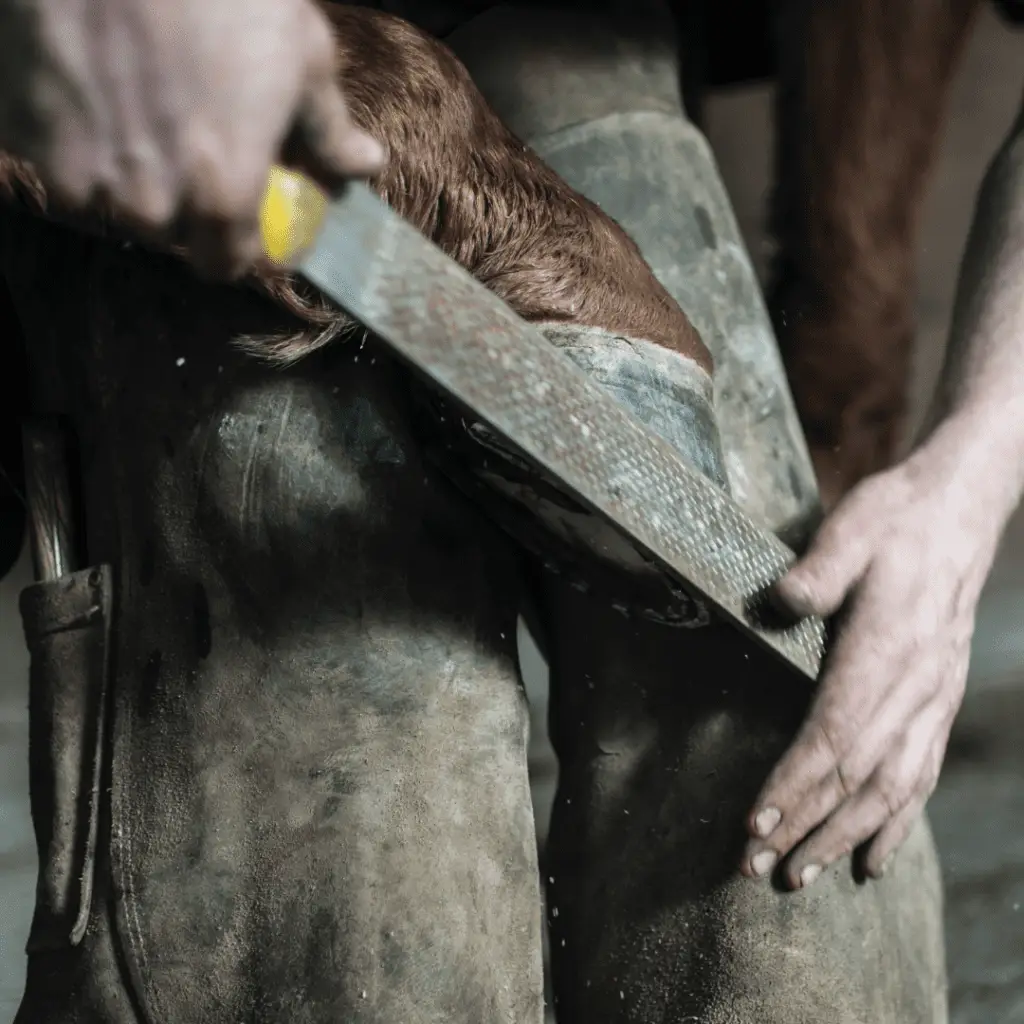
Coat Change
Here’s how you can help your horse When the days start to get longer and spring arrives, we throw our thick winter coats into the basement and wait for the warmer weather. While we are ready for the change in

Hoof care is an important part of equine health care. The hooves are the foundation of the horse and bear the entire body weight of the animal. Regular hoof care is therefore essential to maintain healthy and strong hooves and to detect and treat possible problems at an early stage.
The first step in hoof care is to check the hooves regularly. This should be done thoroughly at least once a week, in addition to daily hoof scraping, to detect any changes in the appearance or structure of the hooves at an early stage. During the check-up, both the hooves themselves and the area around the hooves should be examined. This includes checking the hooves for cracks, abscesses or injuries as well as palpating the hooves for warmth or pain.
Not only you as the owner, but also an experienced farrier or hoof trimmer should check and trim your horse’s hooves regularly, usually about every 6 weeks. Trimming involves cutting away the excess horn mass of the hooves to maintain and support the natural shape of the hoof. However, irregular or inaccurate trimming can lead to problems such as misalignment or deformation.
In addition, a farrier may recommend the fitting of horseshoes. This can be especially important for horses that have to walk frequently on hard surfaces, suffer from deformities or have an injury to the hoof. Horseshoes can help protect the hoof and support the natural shape of the hoof.
Another important aspect of hoof care is proper nutrition. A balanced diet rich in vitamins and minerals can help maintain healthy hooves. Zinc, copper, biotin and methionine in particular are important for horn formation and should be included in the feed in sufficient quantities. A deficiency of these nutrients can lead to weak and brittle hooves.
Exercise and turnout also play an important role in hoof care. Horses that are kept in cramped stalls or do not have adequate exercise are at higher risk for hoof problems. Exercise and turnout promote blood circulation in the hooves and thus play an important role in horn formation and the removal of waste products. In addition, stalls and paddocks should always be kept as clean and dry as possible to prevent diseases such as thrush.
Another important issue regarding hoof care is the treatment of hoof problems. If problems are identified during regular hoof checks, action should be taken quickly to prevent the situation from worsening. Possible problems that need to be treated during hoof care can include laminitis, hoof abscesses, hoof roller inflammation and hoof splitting.
In conclusion, hoof care is an important part of equine health care. Regular inspection, hoof trimming, a balanced diet, adequate exercise and exercise, and treatment of hoof problems are all important steps in maintaining healthy and strong hooves. It is important that horse owners and grooms regularly check their horses’ hooves and, if necessary, seek professional help to treat possible problems at an early stage.


Here’s how you can help your horse When the days start to get longer and spring arrives, we throw our thick winter coats into the basement and wait for the warmer weather. While we are ready for the change in

Expert Advice: Kim Lina Pethahn, an independent feed consultant, wrote this article. Offering the Necessities & Avoiding Overdosages Whether your horse needs supplements at all depends on both the pre-existing conditions and the energy consumption of your horse. However, an

For a healthy foundation Hoof care is an important part of equine health care. The hooves are the foundation of the horse and bear the entire body weight of the animal. Regular hoof care is therefore essential to maintain healthy

Pollen Alert! How to Protect Your Horse from Summer Allergies Sneezing in the stable? When itchy noses and tough breathing become a problem. While spring and summer bring enjoyment for us, many horses suffer due to pollen season. Horses, just

Constant Free Movement in Herds Can Help Against Obesity We always talk about how feed can affect a horse’s weight but feed is not the only thing that can and should be considered when helping a horse lose weight sustainably.

Watery eyes, discharge from the ears, swelling or gum colour give you information about possible infections or injuries. In this blog post you can read how to interpret these symptoms. What You Need to Know About the Horse Head Discharge